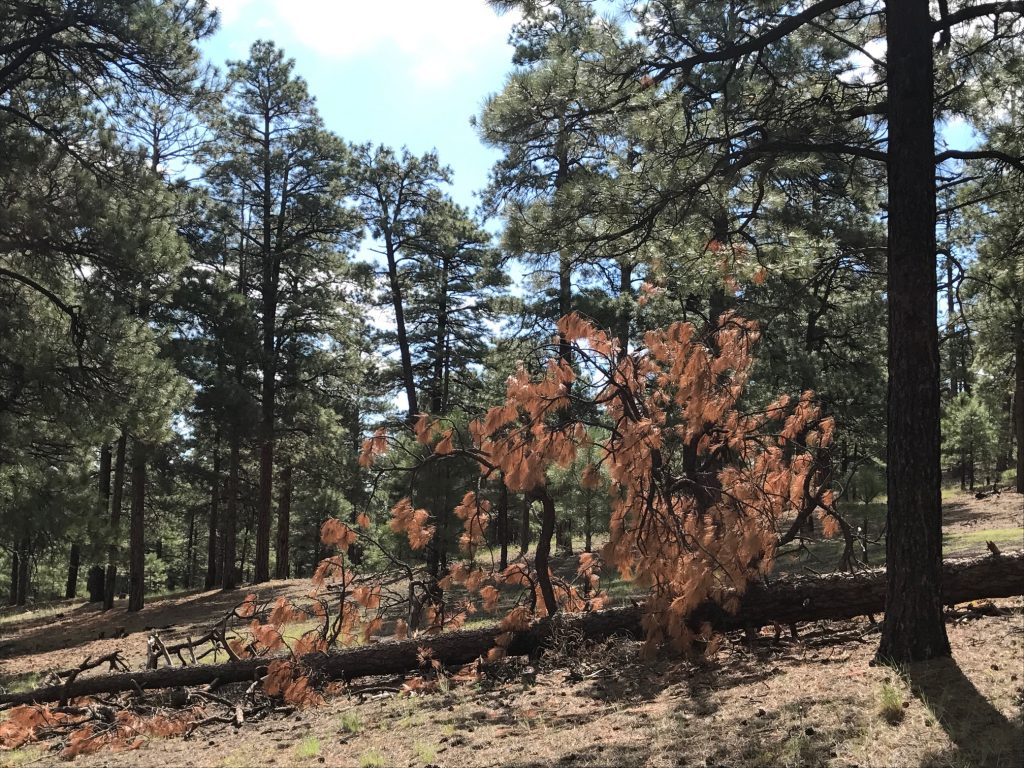By Heidi Toth
NAU Communications
A new study out of the School of Earth Sciences and Environmental Sustainability (SESES) at Northern Arizona University looks at the monetary value of forest fire prevention to nearby homeowners.
Julie Mueller, an economics professor in the W. A. Franke School of Business who also is an SESES faculty member, SESES professor Abe Springer and Ryan Lima, a doctoral student studying the effects of Glen Canyon Dam on sediment storage and erosion rates of sandbars in the Grand Canyon, asked homeowners in the Flagstaff area whether they would be willing to pay a monthly fee that would fund forest thinning in their areas. Thinning a forest helps to protect from wildfire by removing fuel sources and allowing plants to grow more naturally.
They found that two primary factors affected a homeowner’s willingness to pay the $4-a-month fee: proximity to forest and peak views. They didn’t affect it in the same way, though.
“This study found that those living closer to areas where forest restoration is occurring were more willing to pay,” Lima said. “That makes intuitive sense, right? If you live out in the woods you are likely more aware of the danger wildfires pose to your home than those living in the city where concrete, non-flammable surfaces dominate and trees are less common.”
So, people who are physically close to the forest are more likely to be concerned about fire and more likely to be willing to pay. Those not close, but who enjoy a nice view of the San Francisco Peaks, were less willing to pay.
“This seems to make sense too; if you bought a house for its stunning views of the forest and mountain and someone says they want you to pay to thin the forest, you might fear this will reduce the beauty of your forest view and reduce your willingness to pay for that thinning,” Lima said. “Also, if you have a good peak view, it means your house is probably not overcrowded with vegetation that obscures your view, and if your house is not surrounded by vegetation, how worried are you that wildfire will affect your home?”
Mueller, whose research regularly looks at the economic value of forests and restoration, said this particular study is informing a research project she’s doing with the U.S. Geological Survey in Fort Collins, Colorado, that measures the value of attributes of watershed restoration in New Mexico.
“We have strong evidence to show that restoration has significant positive benefits,” Mueller said.
Springer, whose research focuses on groundwater, said this research and other studies like it are part of the group’s larger research agenda to incorporate watershed service values into research and management action priorities.
“Too frequently, land and resource management decision benefits aren’t framed with information on all of their non-market values, such as those provided by runoff and recharge of rain and snow,” he said. “Our research helps managers incorporate the values of difficult-to- quantify benefits of forest and watershed restoration.”



